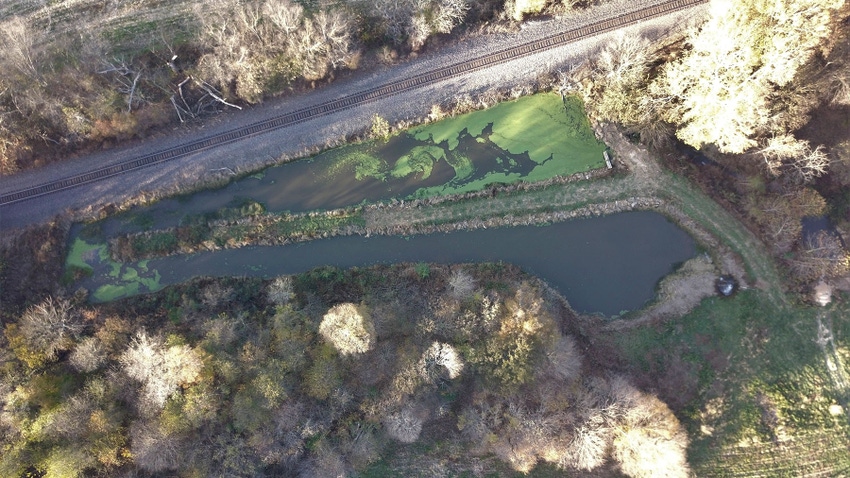
Using wetlands to filter out sediment, nutrients and other materials from water is not a new idea. Natural wetlands have performed this function for centuries. In Indiana, two Kosciusko County dairy farmers constructed an artificial wetland over three decades ago to help remove solids and purify water coming from the dairy.
Sources indicate it isn’t a foolproof method. Some nutrients, especially nitrogen, can be harder to filter out in a wetland environment. However, a few years ago, Dave Fischer, Dubois County, Ind., figured a wetland would do a good job of filtering the water leaving his rolling livestock farm. He wasn’t expecting it to directly filter concentrated wastewater, such as from a confinement operation. Instead, his goal was to remove sediment and nutrients from any surface water leaving his farm.
“We have 700 continuous acres, with most of it devoted to growing forages for our cattle,” he explains. “We focus on annual ryegrass as a cover crop, grazing it and then chopping it as haylage. It supplements corn silage, which we also chop.
“There is a big shift in elevation from one end of our farm to the other. Over time, we’ve constructed seven ponds to help control runoff and water flow. Only one of them serves as a source of drinking water for our beef cattle.”
The biggest pond, covering more than 2 acres, sits near the lowest elevation of the farm. Water coming down the watershed winds up in this pond.
Cleaner water
Several years ago, Fischer decided to create a wetland on the lower side of the biggest pond, situated between the driveway to the farm and a railroad track that borders a highway. He constructed it himself, without cost-share funding.
“We did rely on technical advice from the Natural Resources Conservation Service and local soil and water conservation district personnel,” he says. “Their advice was very helpful as we designed and implemented it.”

1 OF 7: This is the largest of seven ponds on Dave Fischer’s farm. Water from this pond, which covers more than 2 acres, exits as overflow through a drain tile into a constructed wetland.
How does water get from the pond into the wetland? Fischer installed a 4-inch-diameter tile under the driveway, connecting the pond on one side and the wetland on the other. When water builds up in the pond to a sufficient level, it overflows through the tile into the wetland.
Once in the wetland, natural processes within the ecosystem go to work, he says. As water moves slowly through the wetland, sediment and nutrients filter out. They tend to be left behind in the soils underneath the wetland.
“The goal is for water that eventually moves out of the wetland and off our land to be as clean as possible,” he says. Under normal conditions, there is not a large amount of water at any one time leaving the wetland.
“What does leave should be relatively clean — especially free of sediment,” Fischer says. Sediment is a major contaminant in creeks, ditches and other waterways.
About the Author(s)
You May Also Like




